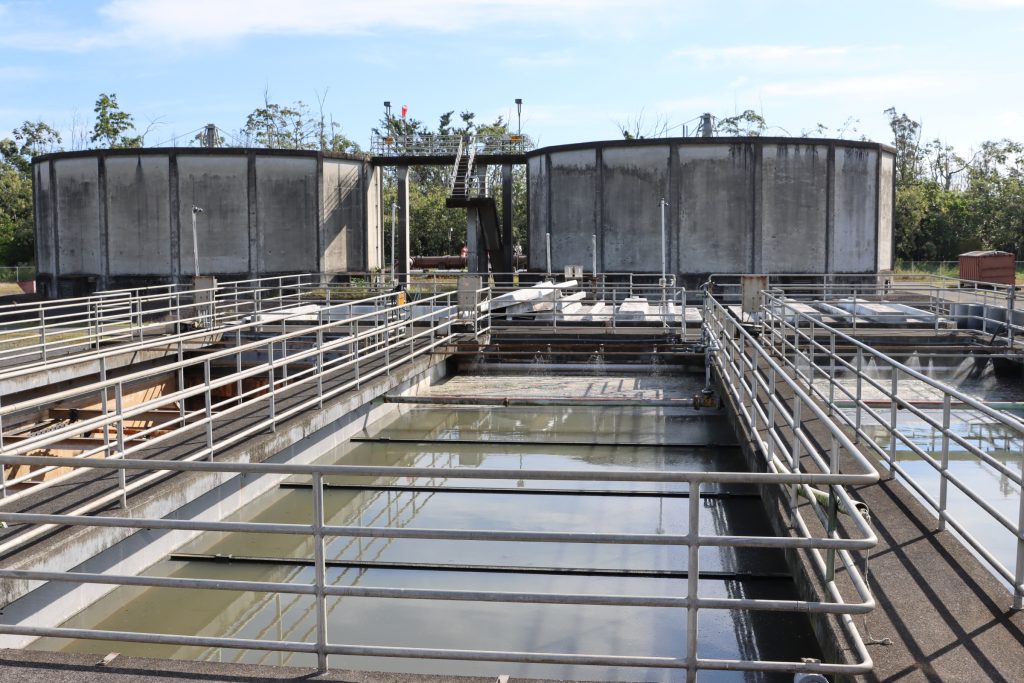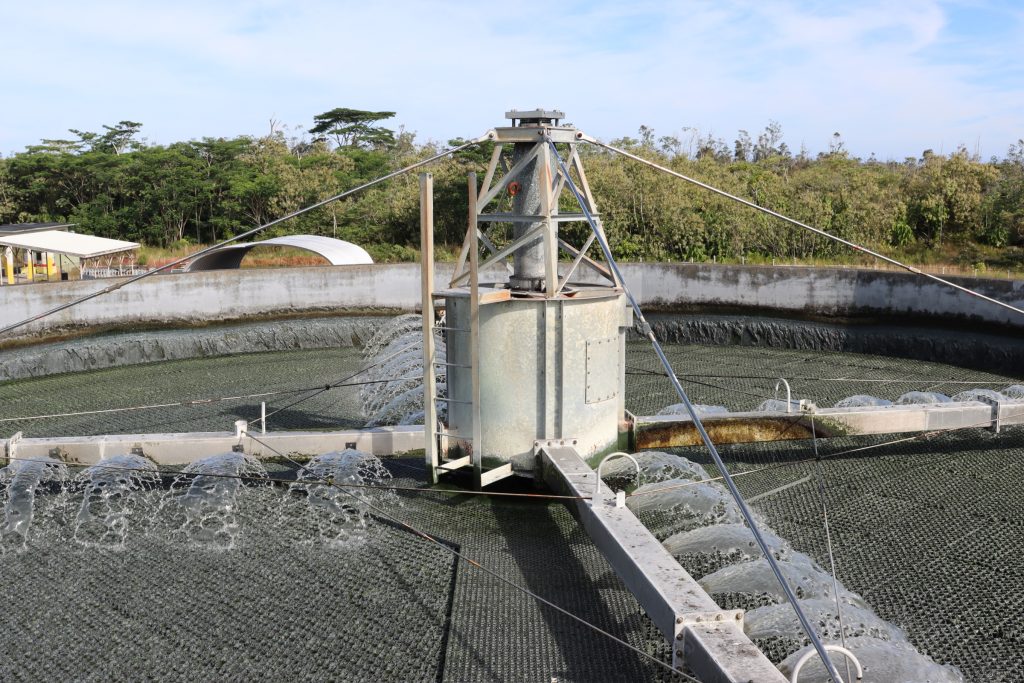Emergency proclamation issued for Hilo Wastewater Treatment Plant

Hawaiʻi County Mayor Kimo Alameda on Tuesday — as a proactive measure to protect public health and safety — signed an emergency proclamation for the Hilo Wastewater Treatment Plant.
The treatment plant in Keaukaha, which has operated since 1996 without any renovations or upgrades, is slated for a major fedrally mandated rehabilitation project.
“It is our duty to protect the health and safety of our residents as well as our environment,” said Alameda. “By moving forward with repairs and upgrades to our Hilo Wastewater Treatment Plant, we are making critical investments in our infrastructure that will serve the community for years to come.”
Hawaiʻi County and the U.S. Environmental Protection Agency entered into an agreement last spring to address pollution discharge that was not meeting standards of the federal Clean Water Act.
The administrative order called for the county to repair or replace the facility and address other wastewater infrastructure deficiencies.
An official with former Hawaiʻi County Mayor Mitch Roth’s administration said last year that the upgrade project at the Hilo plant would be one of the largest county projects in decades.
Engineering assessments noted mechanical defects, structural deterioration and extensive corrosion at the treatment plant that could result in a sewage spill at the facility.
Deficiencies also were found in the sewer collection system in Hilo.
“This emergency proclamation also allows us to take the necessary steps to ensure that we mobilize quickly and bring together all the necessary partners if a significant sewage spill happens anywhere in Hilo,” Alameda said.
The county awarded a $337 million contract to Honolulu-based Nan Inc. to address the critical infrastructure needs as part of the Hilo Wastewater Treatment Plant Rehabilitation and Replacement Project.
A notice to proceed is anticipated in early March. The project is expected to take about 5 years to complete.
Alameda also directed staff to develop a response and mitigation plan so the county is prepared to address a sewage spill at any critical infrastructure location.
The treatment plant project focuses on rehabilitating the primary and secondary treatment facilities by replacing infrastructure and integrating modern technology.
Work will be done in phases to ensure the plant remains operational during construction. Safeguards will be in place to aid in emergency response.
Key repairs and upgrades include:
- Improved waste removal: By replacing the headworks system, large debris and sand will be removed more effectively.
- Better sludge treatment: New primary and secondary digesters, an anaerobic digester and solids handling and digester control buildings will be constructed to improve waste processing.
- Upgraded equipment: Outdated equipment will be replaced, water quality processes will be improved and advanced odor-control systems will be installed.
- Modern technology: A plantwide supervisory control and data acquisition system will be implemented to automate and monitor plant operations. A new control and server room will be installed for better system management.
- Increased reliability: The main switchboard, pumping stations and critical facilities will be upgraded to make the plant more efficient and reliable.
Emergency Proclamation Relating to Hilo Wastewater Treatment Plant by Tiffany De Masters on Scribd
The Hilo Wastewater Treatment Plant serves about 30,000 residents and treats 3 million gallons of wastewater a day on average.
Some large discharge events during the past few years further highlight the need for the plant’s renovation.
An estimated 607,000 gallons of non-chlorinated secondary treated effluent wastewater was discharged last June into Hilo Bay from the Hilo Wastewater Treatment Plant. The Hawai‘i County Department of Environmental Management said the problem happened due to a failure of the chlorination system that occurred when the chlorine was being replenished.
There was an even larger discharge in November 2022 from the Hilo plant.
Hawai‘i Department of Health officials advised the public to stay out of waters from Puhi Bay to Onekahakaha in Hilo because an estimated 2.2 million gallons of partially treated sewage spilling into Hilo Bay.
Big Island residents can stay up to date on the Hilo Wastewater Treatment Plant rehabilitation via email by signing up on the the county website.
News reporter Nathan Christophel contributed to this story.
Sponsored Content
Comments
















